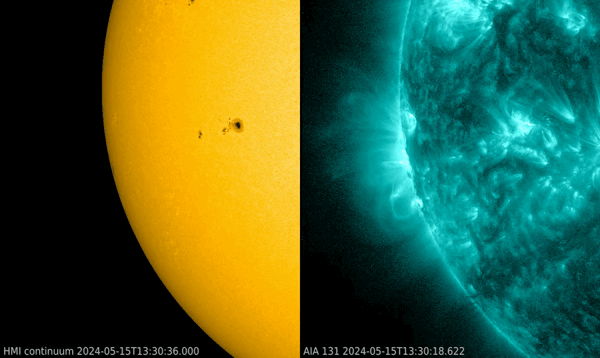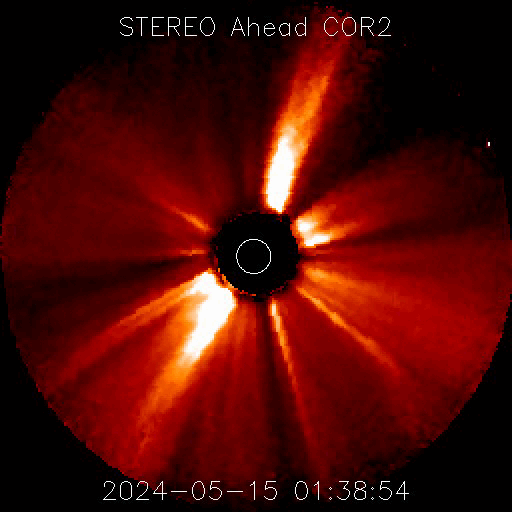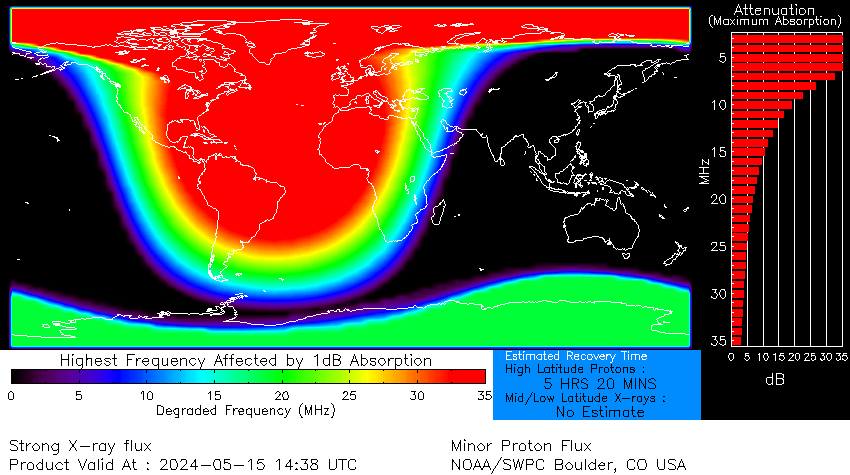While rounding the Sun's west limb, NOAA 3664 continued to produce X-class flares (STCE newsflash ). The eruptive activity from this active region will stop for sure during the next 24 hours, as the region will be too far beyond the solar limb to produce any x-rays to be recorded by earth-orbiting satellites. No worries, a new active region has shown up near the Sun's east limb producing already an X-class flare from its own. The region, so fresh it hasn't actually gotten a number yet by NOAA/SWPC, generated a potent X2.9 flare peaking on 15 May at 14:38UTC (GOES ; chart). In the clip underneath (SDO), white light images (left) show the leading sunspots from this active region, while extreme ultraviolet (EUV) images (right) show the Sun at multi-million degrees (SDO/AIA 131). The strong blooming and diffraction patterns that can be seen in the SDO/AIA 131 images on the right are instrumental (more information is in Note 1 of this STCE newsitem).

STEREO-A coronagraphic imagery indicated a coronal mass ejection (CME) was associated with this X-class flare (clip underneath). The SIDC forecaster is currently analyzing if there's any earth-directed component. The clip underneath covers 15 May and shows both the CME related to the X3.4 by NOAA 3664 earlier this morning (moving to the west or "right"), and the CME associated with the X2.9 from the new active region moving to the southeast ("lower left").

High Frequency (HF) communications may have been disturbed over the daylight side of the Earth (D-RAP ; map underneath). Advisories for disturbed HF Com have been sent to the civil aviation by PECASUS. A solar flare effect (SFE) of 5-20 nT was distinguished in some of the available recordings from the dayside magnetic observatories in Europe (e.g. Portugal) and Africa (e.g. Algeria) (Intermagnet (BGS)). An SFE happens when one or more components of the magnetic field strength show a spike around the time of the flare's peak due to ionospheric enhancement by the flare's x-ray and (E)UV radiation (also known as a "magnetic crochet"). Radio bursts seemed to have been weak (NOAA/USAF network), with the Humain Radioastronomy Station recording weak Type II and Type III radio bursts (radio spectrogram). Over the next few days, as the sunspot region becomes better visible, it will become clear if we are dealing with the new successor of NOAA 3664.






